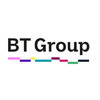Filter interviews by
Huawei Technologies Telecom Engineer Interview Questions and Answers
Huawei Technologies Telecom Engineer Interview Experiences
1 interview found

Discussion regarding the company. And the basic job roles
(2 Questions)
- Q1. About studies, projects only. For fresher
- Q2. Explain about your project
Interview Preparation Tips
Top trending discussions






Interview questions from similar companies

I applied via Naukri.com and was interviewed before Nov 2023. There were 4 interview rounds.
(1 Question)
- Q1. Data Structures and algorithms
(2 Questions)
- Q1. Dsa java angular
- Q2. Sql queries and db related questions
(1 Question)
- Q1. Case study details
(1 Question)
- Q1. Basic questions

I applied via Walk-in and was interviewed before Jul 2021. There were 2 interview rounds.

(2 Questions)
- Q1. Information about Networking?
- Ans.
Networking is the practice of connecting devices together to share resources and communicate with each other.
Networking involves the use of protocols and technologies such as TCP/IP, DNS, DHCP, and VLANs.
Networks can be wired or wireless, and can span across local or wide areas.
Networking also includes security measures such as firewalls, VPNs, and encryption.
Examples of network devices include routers, switches, hubs,...
- Q2. Practical Test for networking?
Interview Preparation Tips
Skills evaluated in this interview

Interview Questionnaire
2 Questions
- Q1. Learn from basic and be confident.Lan wan F5 firewall if any
- Q2. Be confident and only put on resume what you know.

(2 Questions)
- Q1. What is IPRAN solution
- Ans.
IPRAN solution stands for Internet Protocol Radio Access Network, which is a network architecture that combines IP/MPLS and mobile technologies.
IPRAN solution is used to provide high-speed internet access to mobile users.
It helps in optimizing network resources and improving network performance.
Examples of IPRAN solution providers include Cisco, Huawei, and Juniper Networks.
- Q2. What is the different types of L2VPN we have
- Ans.
Different types of L2VPN include Ethernet VPN (EVPN), Virtual Private LAN Service (VPLS), and Layer 2 Tunneling Protocol (L2TP).
Ethernet VPN (EVPN) - Uses BGP as the control plane protocol for distributing MAC addresses across the network.
Virtual Private LAN Service (VPLS) - Extends a LAN over the network, allowing multiple sites to appear as if they are on the same LAN segment.
Layer 2 Tunneling Protocol (L2TP) - Creat...
Interview Preparation Tips
Skills evaluated in this interview

(1 Question)
- Q1. What is network
- Ans.
A network is a collection of computers, servers, mainframes, network devices, and other devices connected to one another for sharing data and resources.
Networks can be classified based on their size (LAN, WAN, MAN)
Networks can be wired or wireless
Networks can be private (intranet) or public (internet)
Networks use protocols like TCP/IP for communication
Skills evaluated in this interview

I applied via Naukri.com and was interviewed before Jul 2021. There were 2 interview rounds.

(4 Questions)
- Q1. Rssi , kpi, Nsb, dus to bbu migration
- Q2. Lte architecture ,lte frame
- Q3. Tdd ,fdd , half duplex and full duplex
- Q4. Call flow , scripts work
Interview Preparation Tips
- LTE

I applied via Company Website and was interviewed in Oct 2022. There were 3 interview rounds.

The discussion is about the benefits and drawbacks of artificial intelligence and UPI payments.
(6 Questions)
- Q1. They have asked Self introduction.
- Q2. The project's that I have worked on my final sem.
- Q3. The role and responsibilities that I have done in my previous internship.
- Q4. What are your strengths and weaknesses?
- Ans.
My strengths include problem-solving and teamwork, while my weaknesses involve time management and overcommitting to projects.
Problem-Solving Skills: I excel at diagnosing network issues quickly, as demonstrated when I resolved a major outage in under an hour.
Team Collaboration: I thrive in team environments, having successfully led a project where we implemented a new routing protocol together.
Time Management: I somet...
- Q5. What kind of compensation are you looking for?
- Q6. Where do you see yourself in five years?
- Ans.
In five years, I envision myself as a senior network engineer, leading projects and mentoring junior engineers in advanced networking.
Leadership Role: I aim to take on a leadership position where I can guide a team in designing and implementing complex network solutions.
Specialization: I plan to specialize in areas like network security or cloud networking, contributing to innovative projects that enhance organizationa...
Interview Preparation Tips
- Computer Networking
- Communication Skills
- Interpersonal Skills
Proper dress code is required.
Concentrate on what you are saying.

(1 Question)
- Q1. Routing switching

I applied via Naukri.com and was interviewed in Aug 2021. There was 1 interview round.
Interview Questionnaire
21 Questions
- Q1. What is ACI and what are features of ACI?
- Q2. Role of APIC controllers?
- Ans.
APIC controllers are used to manage and automate network infrastructure.
APIC controllers provide a centralized point of control for network infrastructure.
They automate network provisioning, configuration, and policy management.
APIC controllers use APIs to communicate with network devices and orchestrate network functions.
They enable network administrators to easily manage and monitor network traffic and security.
Examp...
- Q3. Leaf and Spine architecture and why fabric mode is used in between these two?
- Ans.
Leaf and Spine architecture is used in data center networks for scalability and redundancy. Fabric mode is used for efficient communication between them.
Leaf and Spine architecture is a two-tier network design where leaf switches connect to spine switches.
Leaf switches are connected to servers and storage devices while spine switches connect to other switches.
This architecture provides high bandwidth, low latency, and ...
- Q4. Why Isis is used in fabric, what is Fabric?
- Ans.
ISIS is used in fabric for routing and scalability purposes. Fabric is a network architecture that allows for high-speed, low-latency communication between devices.
ISIS is a link-state routing protocol that is commonly used in fabric networks.
Fabric is a network architecture that is designed to provide high-speed, low-latency communication between devices.
Fabric networks are typically used in data centers and other hig...
- Q5. What is vtep, vxlan, why and where vxlan is used in ACI?
- Ans.
VTEP is a virtual tunnel endpoint and VXLAN is a network overlay technology used for scaling out virtualized data centers.
VTEP is used to encapsulate and de-encapsulate VXLAN packets.
VXLAN is used to extend Layer 2 segments over a Layer 3 network.
VXLAN is used in ACI to provide a scalable and flexible network fabric for multi-tenant environments.
VXLAN allows for up to 16 million unique network segments.
VXLAN uses a 24-...
- Q6. Traffic forwarding from end point user of one EPG to another EPG of same leaf? protocols used in flow
- Ans.
Traffic forwarding between EPGs on the same leaf is achieved through VXLAN encapsulation and routing protocols.
VXLAN encapsulation is used to create a virtual overlay network that spans multiple physical leaf switches.
Routing protocols such as OSPF or BGP are used to exchange routing information between the leaf switches.
The end point user's traffic is encapsulated in a VXLAN packet and forwarded to the destination lea...
- Q7. Traffic flow from end point of one leaf to to another end point of leaf?
- Ans.
Traffic flow from one leaf endpoint to another leaf endpoint is achieved through spine switches.
Traffic flows from the endpoint of one leaf switch to the spine switch.
The spine switch then forwards the traffic to the endpoint of the other leaf switch.
This is achieved through the use of routing protocols such as OSPF or BGP.
The spine switches act as intermediaries between the leaf switches.
This architecture is known as ...
- Q8. How traffic will be connected to internet by using ACI?
- Ans.
ACI provides connectivity to the internet through external Layer 3 networks.
ACI uses external Layer 3 networks to connect traffic to the internet.
This is achieved through the use of Border Gateway Protocol (BGP) and External Routing Policies (ERPs).
ACI also supports the use of Network Address Translation (NAT) to translate internal IP addresses to external IP addresses.
ACI can be configured to use multiple external Lay...
- Q9. What is AAEP, why it is used?
- Ans.
AAEP stands for Application Centric Infrastructure (ACI) Anywhere Endpoint Policy. It is used to enforce endpoint security policies.
AAEP is a policy that defines how endpoints should be treated in an ACI fabric.
It is used to enforce security policies for endpoints across different domains.
AAEP is used to ensure that endpoints are properly classified and that the correct policies are applied to them.
It is an important c...
- Q10. What if IPG? Interface profile and interface policies?
- Ans.
IPG refers to Interface Profile Group which is used to group interface profiles. Interface policies define the behavior of interfaces.
IPG is used to group interface profiles together for easier management.
Interface policies define the behavior of interfaces such as QoS, security, and VLAN settings.
IPG can be used to apply interface policies to multiple interfaces at once.
For example, you can create an IPG for all acces...
- Q11. What is bridge domain and VNI? Which protocol is it?
- Ans.
Bridge domain is a layer 2 construct that separates broadcast domains. VNI is a VXLAN Network Identifier used for overlay networking.
Bridge domain is used to isolate traffic within a specific VLAN or subnet.
VNI is a 24-bit identifier used to identify VXLAN segments in an overlay network.
Both bridge domain and VNI are layer 2 constructs used in network virtualization.
Bridge domain is not a protocol, but VNI is a protoco...
- Q12. What is tenant and types? What will happen if we use same subnet in more than one bridge domain of single vrf?
- Q13. What is VRF? why it is used in ACI?
- Ans.
VRF stands for Virtual Routing and Forwarding. It is used in ACI to provide network segmentation and isolation.
VRF allows multiple virtual networks to coexist on a single physical infrastructure.
Each VRF has its own routing table, which provides network segmentation and isolation.
In ACI, VRF is used to create tenant networks and provide policy enforcement between them.
VRF can also be used to provide secure connectivity...
- Q14. What are bare metal servers?
- Ans.
Bare metal servers are physical servers without any virtualization layer or operating system installed.
Bare metal servers are also known as dedicated servers.
They are used for high-performance computing, data-intensive workloads, and applications that require direct access to hardware.
Bare metal servers can be customized to meet specific requirements.
Examples of bare metal server providers include IBM, Dell, and HP.
- Q15. Which domain is created to connect VMM domains?
- Ans.
The domain created to connect VMM domains is called the Logical Switch domain.
Logical Switch domain is created in System Center Virtual Machine Manager (VMM) to connect VMM domains.
It is used to provide connectivity between virtual machines and physical networks.
It allows for centralized management of virtual switches and network policies.
Logical Switch domain can be used to create virtual networks that span multiple h...
- Q16. Can we connect spine - spine?
- Ans.
Yes, spine-spine connections are possible in a leaf-spine network architecture.
Spine-spine connections can be used to increase network capacity and redundancy.
However, it is important to ensure that the spine switches are properly configured to avoid loops.
Examples of spine-spine connections include MLAG and ECMP.
Spine-spine connections are commonly used in data center networks.
- Q17. What is vpc? What is vpc domain, role of vpc, advantages?
- Ans.
VPC stands for Virtual Private Cloud. It is a virtual network that provides a secure and isolated environment within the public cloud.
VPC domain is a logical boundary within which resources are created and managed.
VPC allows multiple virtual machines to communicate with each other as if they were on the same physical network.
VPC provides high availability and fault tolerance by allowing multiple instances to be deploye...
- Q18. What is orphon port in nexus?
- Ans.
An orphan port in Nexus is a port that is not associated with any VLAN or interface.
Orphan ports are also known as unused ports.
These ports can be used for future expansion or can be disabled to save power.
Orphan ports can be identified using the 'show interface status' command.
They can also be configured as Layer 3 ports or assigned to a VLAN.
Orphan ports can cause security issues if left unsecured.
- Q19. What is OTV and why need to implement it
- Ans.
OTV stands for Overlay Transport Virtualization. It is used to extend Layer 2 connectivity between data centers.
OTV is a Cisco proprietary technology
It allows for the extension of VLANs across multiple data centers
It provides a layer of abstraction between the physical network and the logical network
It helps in reducing the complexity of managing multiple data centers
It provides a disaster recovery solution by allowing...
- Q20. Difference between traditional Mac learning and conversation Mac learning?
- Ans.
Traditional Mac learning is static while conversation Mac learning is dynamic.
Traditional Mac learning involves manually configuring MAC addresses in the switch's MAC address table.
Conversation Mac learning involves the switch dynamically learning MAC addresses based on the source address of incoming frames.
Traditional Mac learning is more prone to errors and requires more manual intervention.
Conversation Mac learning ...
- Q21. What is VDC? How many vdc can be created in Chassis having one supervisor?
- Ans.
VDC is Virtual Device Context. One supervisor can create up to 4 VDCs.
VDC allows multiple virtual switches to be created on a single physical switch
Each VDC has its own set of interfaces, VLANs, routing tables, and management interfaces
VDCs provide better resource utilization and isolation between different network services
Interview Preparation Tips
Skills evaluated in this interview
Huawei Technologies Interview FAQs
Tell us how to improve this page.
Huawei Technologies Interviews By Designations
- Huawei Technologies Software Engineer Interview Questions
- Huawei Technologies Senior Engineer Interview Questions
- Huawei Technologies Graduate Engineer Trainee (Get) Interview Questions
- Huawei Technologies Network Engineer Interview Questions
- Huawei Technologies Softwaretest Engineer Interview Questions
- Huawei Technologies Engineer Interview Questions
- Huawei Technologies Senior Technical Lead Interview Questions
- Huawei Technologies Researcher Interview Questions
- Show more
Interview Questions for Popular Designations
Overall Interview Experience Rating
based on 1 interview experience
Interview Questions from Similar Companies
Huawei Technologies Telecom Engineer Reviews and Ratings
based on 2 reviews
Rating in categories
|
Senior Engineer
434
salaries
| ₹3 L/yr - ₹12 L/yr |
|
Software Engineer
342
salaries
| ₹2.5 L/yr - ₹11.4 L/yr |
|
Assistant Manager
293
salaries
| ₹4.5 L/yr - ₹15.1 L/yr |
|
Engineer
207
salaries
| ₹2.7 L/yr - ₹8.4 L/yr |
|
Deputy Manager
188
salaries
| ₹5.9 L/yr - ₹20 L/yr |

BT Group

Verizon

Telenor

AT&T
- Home >
- Interviews >
- Huawei Technologies Interview Questions















